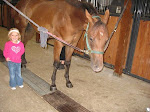
What a difference the right clothing can make. The weather may be cold, windy and wet, but you're warm and dry because you're wearing the proper winter apparel. Whether you're working, skiing, or just running errands, versatile winter apparel is worth the investment.
Shopping for winter clothing can seem a bit overwhelming. New fabrics and insulations are constantly making apparel warmer, more breathable and more waterproof. Fashions seem to change by the season. But don't worry. This guide is designed to give you some basic information about dressing for winter and will make your next shopping trip a lot easier.
Layer Up
The best way to dress for winter is to wear layers. This gives you flexibility to add or remove layers, depending on the weather and your activity. In general,the three main layers are wicking, insulating and weather protection.
Wicking layer: This is the layer worn next to your skin, usually consisting of long underwear.
Look for thermal underwear made of a synthetic — usually polyester — fiber that has "wicking" power. This means the fibers will wick (move) moisture away from your skin and pass it through the fabric so it will evaporate. This keeps you warm, dry and comfortable.
Even though it's cold, you will sweat if you are working or playing hard.
Insulating layer: This middle layer includes sweaters, sweatshirts, vests and pullovers. The purpose of this layer is to keep heat in and cold out, which is accomplished by trapping air between the fibers. Popular insulation materials include:
Fleece, a synthetic material which maintains its insulating ability even when wet and spreads the moisture out so it dries quickly.
Wool, which naturally wicks away moisture.
Protection layer: The exterior layer, generally a shell and pants, serves as your guard against the elements of winter. It should repel water from snow,sleet or rain and block the wind, while also letting perspiration evaporate.
Most genuine winter shells and pants are made waterproof and breathable to some extent by using tightly woven fabrics teamed with a coating or laminate. This keeps moisture on the outside but allows perspiration to escape, keeping you dry and comfortable.
Depending on the weather and type of winter activity you will be doing, you may be interested in uninsulated pants and jackets/shells, or garments with increasing amounts of insulation.
One-piece suits, coveralls, which combine a jacket and pants, are nice as the reduce the opportunity for the elements to get inside.
Look for functional hoods, cuffs, pockets and zippers — details that truly make garments comfortable in a snowstorm.
Accessorize
Headwear: Up to 60 percent of your body's heat can escape from an uncovered head, so wearing a hat, headband or facemask is essential when it's cold. (Tip: If you wear a hat, you may be able to wear one less layer on your body.) There are thousands of styles of hats and headbands, usually made from fleece or wool. Many have non-itch liners. A fleece neck gaiter (like a collar) or face mask is a must on cold days.
Sunglasses: Sunglasses do much more than make you look cool. They also protect your eyes from damaging solar radiation. Snow, or any other reflective surface, makes ultraviolet (UV) rays stronger, while increased altitude also magnifies the danger.
Gloves and mittens: Look for gloves and mittens that use waterproof, breathable fabrics. Mittens, in general, are warmer than gloves, but offer you less dexterity. Consider the type of activity you'll be doing. Some gloves will offer reinforced palms if you are doing heavier work and/or knit cuffs which can keep snow out of your gloves.
Socks: One pair of light-weight or medium-weight socks works best for heavy activity. Wear heavier socks if you are going to be less active, as you want to limit causing your feet to sweat. Socks are made from a variety of materials, including polyester, silk, wool and nylon. Some socks have wicking properties similar to long underwear, meaning your feet will stay dry and comfortable.
Fashion Tips
The wicking layer should fit snugly (not tight) next to the skin in order to effectively wick moisture. Comfort is key for the insulating layer. It should be loose enough to trap air between layers, but not so bulky that it restricts movement. Regardless of you level of activity, your protection layer should fit comfortably, offering you maximum range of motion.
Look for 100 percent UV protection in sunglasses. Make sure the glasses fit snugly behind your ears and rest gently on the bridge of your nose.
Don't buy gloves or mittens that are too tight. There should be a little air space at the tips of your fingers, which acts as additional insulation.
Don't wear jeans or street pants. If it is snowing or raining, wearing denim as your outer layer is not a good idea. Denim is not waterproof, so water will soak through and you'll end up cold, wet and miserable.
Be careful with cotton. Cotton is great for towels, because cotton soaks up and retains moisture.
Resist the temptation of putting on too many pairs of socks. You'll restrict circulation and actually cause your feet to get colder.
.jpg)


